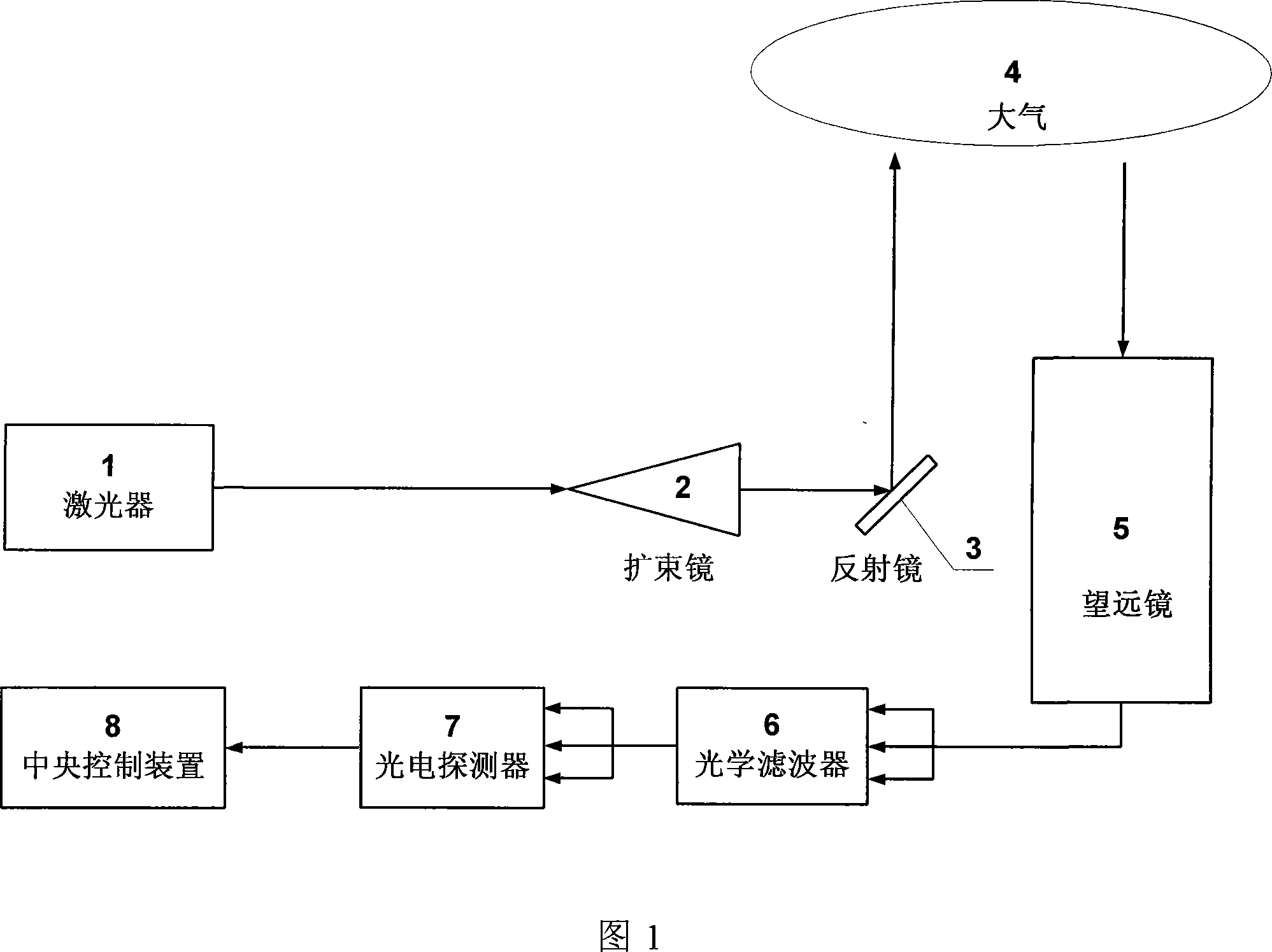All time photon counting laser radar apparatus and method
A technology of laser radar and photon counting, which is applied in the directions of measuring devices, electromagnetic wave re-radiation, and utilization of re-radiation, etc., can solve the problems of high price, large gap between laser radar detection performance and night time, detection distance and accuracy limitation, etc. Effect of low, daytime detection signal-to-noise ratio and detection distance improvement, high-performance working ability
- Summary
- Abstract
- Description
- Claims
- Application Information
AI Technical Summary
Problems solved by technology
Method used
Image
Examples
Embodiment 1
[0029] Take, for example, a photon-counting lidar device operating at 518.362 nm for measuring the extinction coefficient of the atmosphere.
[0030] The wavelength of the laser matches the 518.362nm Fraunhofer line of the Mg element in the solar spectrum. The Fraunhofer line bandwidth of Mg element at 518.362nm is 0.1584nm. In order to make the Fraunhofer and Fernando line bandwidth greater than or equal to the linewidth of the emitted laser, the usual interferometer mode selection method is adopted for the laser, so that the laser linewidth is less than 0.01nm, even if the emission linewidth of the laser is much smaller than the Fraunhofer and Fernando line bandwidth, This causes the laser to emit in the dark window of the solar spectrum. The laser can be an OPO tunable laser, such as the Surelite OPO PLUS laser from Continuum in the United States, which is pumped by a 355nm laser and whose output wavelength can be tuned at 518.362nm.
[0031] The telescope 5 can be a commer...
Embodiment 2
[0037] Take a photon-counting lidar device operating at 526.955 nm for measuring the extinction coefficient of atmospheric aerosols as an example.
[0038] The wavelength of the laser is selected to match the Fraunhofer line 526.955nm of the Fe element in the solar spectrum. The laser can be an OPO tunable laser, such as the VIBRANT (B) 355 II laser of OPOTEK in the United States, which is pumped by a 355nm laser and whose output wavelength can be tuned at 526.955nm. .
[0039] The telescope 5 can be a commercially available general-purpose telescope such as reflective and refracting telescopes, such as the 91024 8-inch Schmidt-Cassegrain telescope produced by Celestron Corporation of the United States. The beam expander 2 is a BE10M-A 10x beam expander from THORLABS, USA. Reflector 3 is a general optical lens coated with a 526.955nm anti-reflection film.
[0040] Optical filter 6 is a serial combination of a bandpass interference filter and a Fabry-Perot etalon. In the so...
PUM
 Login to View More
Login to View More Abstract
Description
Claims
Application Information
 Login to View More
Login to View More - R&D
- Intellectual Property
- Life Sciences
- Materials
- Tech Scout
- Unparalleled Data Quality
- Higher Quality Content
- 60% Fewer Hallucinations
Browse by: Latest US Patents, China's latest patents, Technical Efficacy Thesaurus, Application Domain, Technology Topic, Popular Technical Reports.
© 2025 PatSnap. All rights reserved.Legal|Privacy policy|Modern Slavery Act Transparency Statement|Sitemap|About US| Contact US: help@patsnap.com

